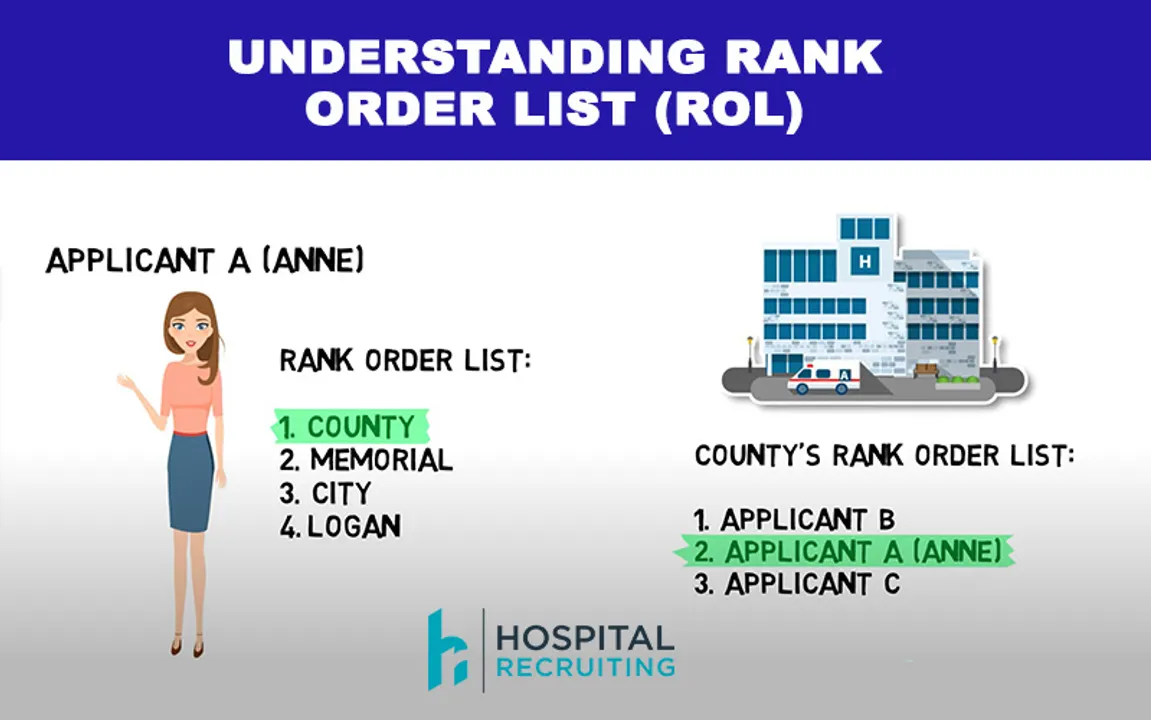Understanding Rank Order List (ROL)

After spending weeks or even months preparing your residency application, eagerly anticipating interview invites, and finally interviewing, you’re likely starting to think about creating your Rank Order List (ROL). Many residency candidates overcomplicate this process—when it is actually straightforward. Here, we’ll help you understand all the different aspects of the Rank Order List.
Rank your most preferred program first
This is one of the most debated topics concerning Rank Order Lists. Some applicants wonder if this approach will make it less likely they will Match, and the answer is no. Simply put, the Match algorithm is “applicant-proposing.” This means it attempts to Match applicants based on their preference.
Placing a program high on your list increases your chances of Matching into that program, but it does not decrease your chances of Matching into other programs. If you don’t Match into a program, the reason is because A) the program did not rank you at all or B) the program ranked other applicants higher than you, and those applicants also ranked the program highly.
We strongly recommend watching the NRMP’s 5-minute video that offers an easy-to-understand explanation about how the algorithm works.
Consider multiple factors when organizing your list
Deciding how to rank programs should include thoughtful reflection of your professional and personal goals. You should write down a list of factors that are important to you and make notes about each item after every interview. These factors might include:
Professional Goals
- Patient volume & diversity
- Access to specific technology
- Research opportunities
- Community involvement
- Fellowship opportunities
Personal Goals
- Geographic preferences
- Work-life balance
- Long-term plans with family/partner
- Cost of living
The program’s culture is important, too. It might be tempting to rank the most prestigious program on your list first, but if you are uncertain about how you’d fit into their culture, you’ll want to consider that. Match A Resident offers a free tool called Rank Assist that aims to help you think about each aspect of the programs you interview with. By rating different components of your interview experiences, each program is assigned a numerical score, helping you analyze your list.
Do not rank programs where you do not want to train
Keep in mind you could end up Matching with any program on your ROL—even the very last one. You might be thinking you’d rather Match at a program you don’t like rather than not Match at all, but have you truly considered the long-term consequences of such a decision? Spending anywhere from 3 to 7 years as part of a program with which you aren’t happy in will be difficult. It could negatively affect your well-being, which is a crucial aspect of your success during your training.
This is a good time to point out that a Match is considered a binding contract. Resigning from your residency will have lasting negative consequences, and it will not be easy to successfully Match into another program.
Consider sending Letters of Intent to your top programs
Once you have made a firm decision about the top programs on your list, consider sending those programs a Letter of Intent. Many applicants wonder if it’s okay to tell a program they plan to rank them #1, and the answer is yes! However, such a statement should reflect your true ranking plans; never tell more than one program they are your first choice.
When sending Letters of Intent to programs that will be high on your list, but not first, you can use language like “Your program’s clinical opportunities are exciting, and your team of residents left a very positive impression during my interview. I intend to place University X very high on my rank order list and would be delighted to Match with you.”
Do not forget to Certify your ROL
As per the NRMP, “[when] a ROL is complete, it must be certified to be included when the matching algorithm is processed. The “Certify List” button in the R3 system prompts applicants to enter their unique R3 system password to confirm certification. By certifying a ROL, applicants are entering a binding commitment to train at any program with which they match.
Applicants can confirm that the list is certified in two ways:
- The “Applicant Status” field in the R3 system will change from “Ranking” to “Certified”
- A confirmation email will be sent to the primary email address on file in the R3 system.
Frequently Asked Questions About the Rank Order List
Should I rank programs where I didn’t interview?
No. Programs that did not interview you will not rank you, so there is no point in ranking these programs.
How many programs can I rank?
You can rank up to 300 programs.
What if I want to make changes to my ROL?
You can make changes to your ROL any time before 9 p.m. (ET) on March 2nd, 2022 (the Rank Order List Deadline). Keep in mind, however, that any changes you make should be well-thought out and not impulsive. Last minute changes are typically not a good idea.
Is the Rank Order List handled differently for those participating in the Couples Match?
The only difference for those applying as part of a couple is that the algorithm considers pairs of ranked programs. This means that both couples must Match into a set of paired programs for a successful Match. If one partner Matches into a paired set, but the other partner does not, the algorithm will move to the next set of paired programs on the couple’s Rank Order List. For more information on this topic, watch All About the Couples Match.
Related Posts
